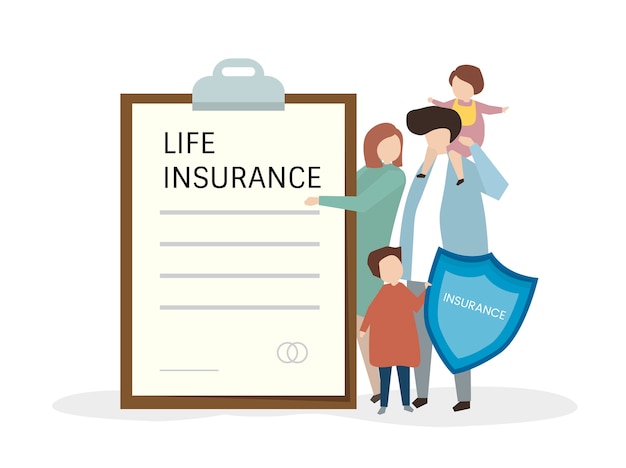Life insurance plays a vital role in securing your loved ones’ financial well-being in the event of your passing. However, with various types of life insurance available, navigating the options can be overwhelming. This guide aims to demystify the different categories, highlighting their key features, coverage, and potential benefits to help you make informed decisions.

1. Term Life Insurance: Your Safety Net During Specific Life Stages
Term life insurance is often considered the most straightforward and budget-friendly option. It acts like a safety net for your loved ones, providing a death benefit if you pass away within a predetermined period, usually ranging from 10 to 30 years.
Imagine this: Picture yourself setting up a temporary safety net for a specific time frame in your life. This net represents term life insurance. If something unexpected happens during this period, the net catches your family financially. The death benefit acts as a cushion, helping them cover expenses or maintain their standard of living.
Key characteristics and advantages of term life insurance:
- Affordable premiums: Compared to other types of life insurance, term life offers the most cost-effective way to secure a substantial death benefit. This makes it a good option for individuals or families on a budget.
- Flexible terms: You can choose a term length that aligns with your specific needs and financial obligations. For example, you might choose a term that lasts for the duration of your mortgage or until your children are financially independent.
- Pure protection: Term life solely focuses on providing a death benefit. It doesn’t have a cash value component, which keeps the premiums lower but doesn’t offer any investment or savings opportunities.
2. Permanent Life Insurance: Protection with a Side of Investment
Permanent life insurance offers lifelong coverage, meaning the policy stays in effect until your passing. Unlike term life, it doesn’t expire after a specific period. In addition to providing a death benefit, these policies also build cash value over time.
Think of it like this: Permanent life insurance combines protection and investment into one package. It acts as a safety net for your loved ones in case of your passing, while also allowing you to build cash value that you can potentially access through loans or withdrawals, subject to the policy’s terms and conditions.
Types of permanent life insurance:
- Whole life insurance: This option offers fixed premiums throughout the policy, and the cash value grows at a guaranteed minimum rate.
- Universal life insurance: This type provides more flexibility in terms of premium payments and investment options compared to whole life. The cash value in universal life doesn’t come with a guaranteed growth rate.
- Variable life insurance: This option links the cash value to the performance of investment choices you select. It offers the potential for higher returns but also carries greater risk due to market fluctuations.
3. Riders: Tailoring Your Coverage for Specific Needs
Riders are optional add-ons that you can attach to your life insurance policy to customize the coverage to your unique needs. These riders come with additional costs, so it’s crucial to carefully weigh their benefits and associated expenses before adding them.
Examples of common riders:
- Waiver of premium rider: This rider waives future premiums if you become disabled and unable to work, ensuring your policy remains active.
- Accidental death benefit rider: This rider provides an additional death benefit if your passing occurs due to an accident.
- Guaranteed Insurability Rider: Locking in Future Coverage Options A guaranteed insurability rider is an optional add-on to your life insurance policy that allows you to purchase additional coverage at pre-set intervals without having to take another medical exam. This feature can be especially valuable if your health changes in the future, potentially making it difficult or expensive to qualify for additional coverage without the rider.
Choosing the Right Life Insurance
The ideal type of life insurance for you depends on several factors, including your individual circumstances, financial goals, and budget. Here are some essential aspects to ponder before making your final decision:
- Age and Health: Factors Influencing Premiums When it comes to life insurance premiums, your age and health play a significant role. Generally, younger individuals and those in good health typically qualify for lower premiums
- Your family’s financial needs: Determine the amount of financial support your loved ones would require if you were no longer present.
- Your risk tolerance: Consider your comfort level with the potential fluctuations in cash value associated with some permanent life insurance options.
- Your budget: Choose a policy that integrates seamlessly into your budget without creating financial strain.
Consulting with a qualified financial advisor is highly recommended before finalizing your life insurance choice. They can help you navigate the different options, understand the benefits and limitations of each, and ultimately, select the policy that best aligns with your unique financial situation and goals. Remember, life insurance is a crucial decision, so take your time, carefully research your options, and seek professional guidance to ensure you make the best choice for your loved ones and your financial security.
